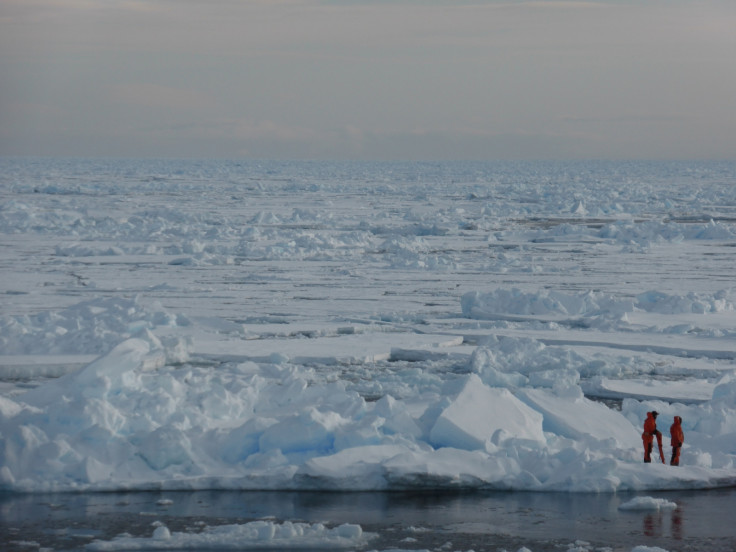Viral graph shows catastrophic polar ice loss due to extreme weather
Scientists say extreme events are partly due to climate change but had different causes.

Simultaneous but largely unrelated events in the Arctic and the Antarctic have led to a dramatic global low in sea ice extent.
This is not normal. Global #seaice area...
— Zack Labe (@ZLabe) November 16, 2016
(via https://t.co/qwD3k8Ku3h) pic.twitter.com/LppEwpCidm
A graph showing a remarkable record low ice cover for 2016 in the Arctic and the Antarctic has gone viral on Twitter. Scientists have now say that this is due to events in the Polar Regions that are partially – but not entirely – due to climate change.
The graph was first tweeted by Zack Labe of Cornell University, after it appeared in a sea ice data forum.
There are two factors that have led to the dramatic results shown in the graph, Greenpeace's EnergyDesk reports.
The first factor is that Arctic ice usually starts to reform again about this time of year with the onset of winter, but it is weeks late in 2016.
The second is that ice in the Antarctic – where it is approaching summer – is melting more quickly and earlier than usual. This could be due to a strong El Niño effect last year, which meteorologist and science writer Eric Holthaus says could affect the rate of Antarctic melting.
The simultaneous occurrence of these events is what has led to the overall dip in sea ice extent.
The graph was first tweeted by Zack Labe of Cornell University, after it appeared in a sea-ice data forum.
Visualization of #seaice from 9/19-11/19/2016. Outer lines indicate the average sea ice extent in the 1980/1990/2000s. Watch the Kara Sea: pic.twitter.com/xRqaCJFV0c
— Zack Labe (@ZLabe) November 20, 2016
The National Snow and Ice Data Center in the US told The Verge that combining Arctic and Antarctic sea ice extent in the same graph was not always a useful indicator of climate trends. "Looking at each region's ice extent trends and its processes separately provides more insight into how and why ice extent is changing."
The two poles have very different geography and different climatic factors are in play, it said.
"While both regions are affected by air, wind, and ocean, the systems and their patterns are inherently very different. Moreover, at any point in time, the two poles are in opposite seasons, and so a combined number would conflate summer and winter trends, or spring and autumn trends, for the two regions."
Julienne Stroeve of University College London, says that this data alone does not indicate that climate change is happening faster than we thought.
However, she pointed to another study published earlier this year that showed summer sea ice loss in the Arctic was equivalent to 3 square metres per tonne of carbon dioxide emitted, suggesting that climate models have underestimated the impact of carbon emissions on sea ice.
Mark Brandon of the Open University says that the phenomenon is an example of very extreme weather, partially accounted for by climate change.
© Copyright IBTimes 2024. All rights reserved.







